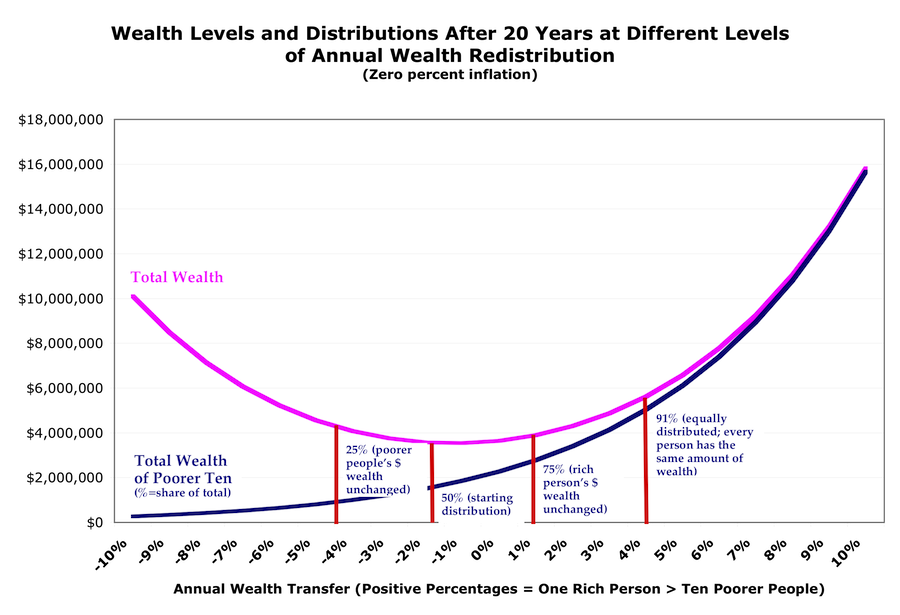From Asymptosis:
In a recent post I built a model with one rich person and ten poorer people to ask: does redistribution from rich to poor make us all more wealthy? The conclusion was Yes. Jump back there to see a quick rundown of the model’s assumptions.
Michael Sankowski at Monetary Realism put the model through its paces, and provide feedback by email. He pointed out one very interesting thing: total wealth accumulation in the model increases (faster) with redistribution in both directions — from rich to poor and poor to rich.
(Note that redistribution could take infinite forms — traditional welfare, education and health-care spending, tax preferences for rich people’s investment income, corporate subsidies, etc. This is systemic redistribution we’re talking about here. Like this model, the system just does it.)
Here’s what that looks like, with starting wealth of $2 million, divided 50/50 between the rich person and the ten poorer people. (click for larger):

(Since income in this model is based on spending from wealth, the income curves look similar to these wealth curves.)That sounds like the "Hawthorne Effect", the productivity studies at Western Electric's Hawthorne plant in the 1920's. In the Illumination Experiment the researchers reported that any change, including making the workspace dimmer, resulted in increased productivity.
It sure looks like giving more money to rich people does make the pie bigger — just not as fast or as much as giving more money to poorer people.
Since the model is based on the idea that poorer people spend more of their wealth each year, so giving them more money increases money velocity hence GDP and eventually wealth, this seems weird. But here’s the explanation: there’s a zero lower bound on poor people’s spending. It can only decrease so far, and so fast. Rich people’s spending can keep increasing with no constraints.....MORE
The effect may not have been as robust as the researchers thought but there is something to it. Here's a 2011 re-examination by Steven Levitt. (16 page PDF)